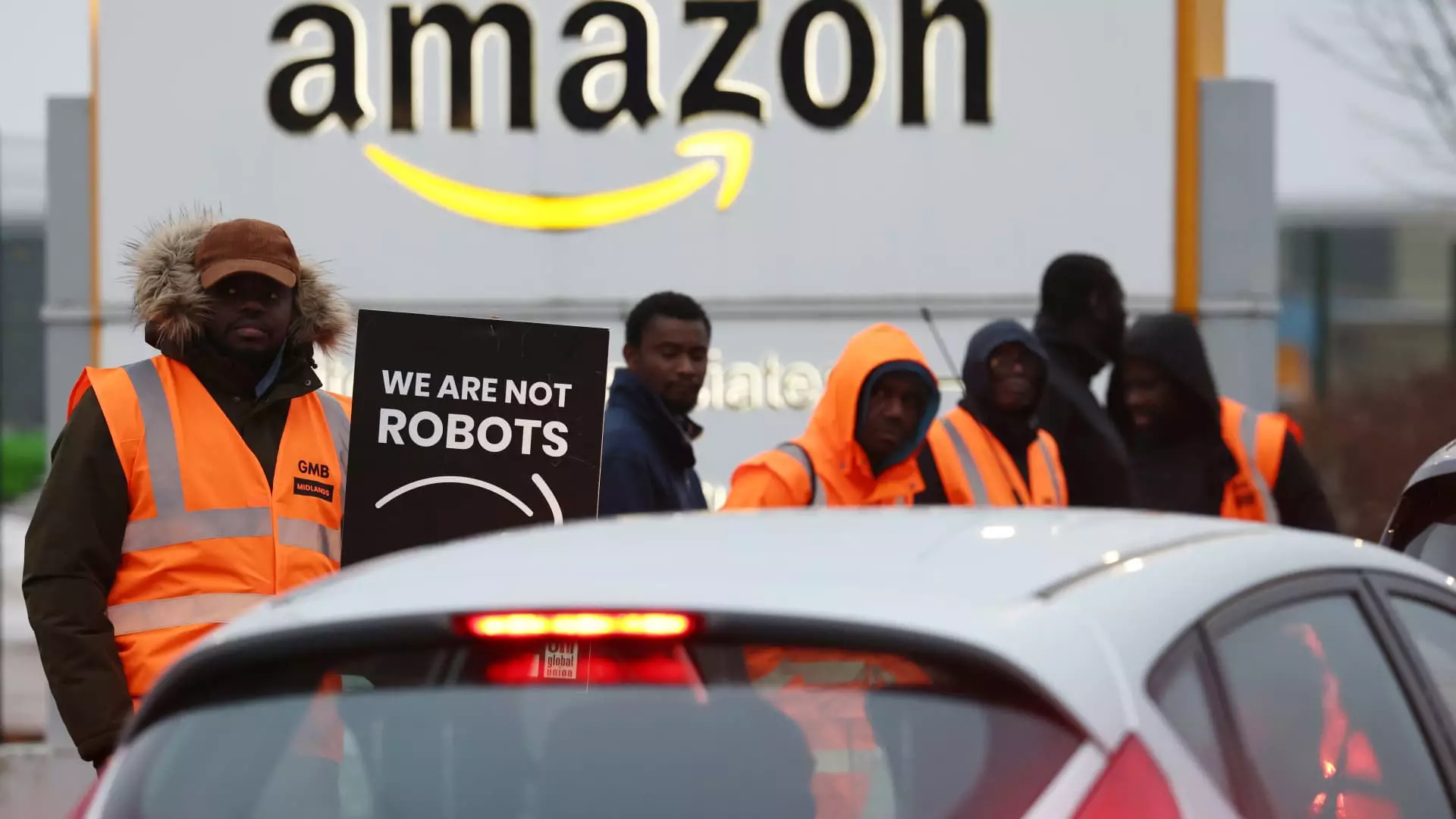Amazon’s announcement of surpassing one million robots in its global network marks a significant milestone in the relentless march toward automation. While this achievement stands as a testament to technological progress, it raises critical questions about the broader societal implications. The narrative of innovation often glosses over the profound worker displacement that comes hand-in-hand with these advancements. The company’s claim that these robots “work alongside” human employees to augment productivity conveniently sidesteps the uncomfortable truth: automation’s primary role is to replace human labor, not merely to assist it.
By deploying a new generative AI model to guide its robotic fleet, Amazon emphasizes efficiency gains—specifically reducing travel time by 10% and enabling faster deliveries. However, these numbers are more than just operational metrics; they reflect a broader shift to prioritize cost-cutting over human employment. When tech giants trumpet smarter, faster systems, they often do so at the expense of the workforce, framing automation as innovation while neglecting the social costs. The promise of creating “new opportunities” for workers is often an optimistic rhetoric that fails to match the reality; essential blue-collar jobs are vanishing, and the gap between the skilled and unskilled is widening.
The Illusory Promise of Job Creation
Amazon’s public stance suggests that automation frees up human workers to take on more technical roles—maintenance, engineering, oversight. Still, this narrative ignores the structural barrier for most low and middle-income workers: retraining. Not everyone can swiftly transition from manual labor to high-tech roles, especially in regions with limited access to quality education or training programs. The company’s statement about the new Louisiana fulfillment center, which created 30% more employment in technical fields, sounds promising but is likely an exception rather than the rule. The overall trend suggests a net loss in employment, as roles that once required human effort are now automated.
Despite Amazon’s claims of “creating” opportunities, the truth remains that automation primarily erodes existing jobs. As AI and robotics become further integrated into supply chains, manufacturing, and even services, the days of steady employment in these sectors are dwindling. The idea that AI will “shape” a future with more jobs is a fragile illusion; the evidence from recent years indicates a shrinking workforce coupled with layoffs and job cuts motivated by cost reductions.
Corporate Rhetoric vs. Economic Reality
The disconnect between Amazon’s public assurances and the reality of its workforce is stark. While Scott Dresser points out robots working “alongside” humans, his comments are ultimately a smokescreen for a changing labor landscape increasingly dictated by automation. The recent layoffs of over 27,000 employees in 2022 and 2023 illustrate the ongoing decline of traditional employment, a trend that is likely to accelerate as AI evolves further.
Amazon’s leadership, including CEO Andy Jassy, admits that automation will lead to fewer jobs in certain areas—yet they simultaneously project optimism about future hiring in AI and robotics-related roles. This narrative conveniently shifts responsibility from corporate greed and technological progress to a future that “creates new opportunities.” However, such optimistic projections underestimate the speed and scale of displacement and fail to address the social safety nets needed to cushion these transitions.
The broader tech industry is already experiencing this cognitive dissonance. Companies like Shopify warn of AI’s hollowing out of jobs, while industry leaders pursue rapid automation to stay competitive. It’s a race to capitalize on efficiencies that inevitably come at the expense of workers. This pattern demonstrates a fundamental flaw: prioritizing shareholder profits and technological dominance over the well-being of the average worker.
Reevaluating Progress in the Age of Automation
It’s time to scrutinize the narrative that automation is an unmitigated good. The promise of efficiency and innovation must be balanced against the societal costs—namely mass unemployment and economic insecurity. Rhetoric from industry leaders often portrays robots as allies rather than rivals, but the reality is that automation threatens to displace millions of livelihoods, especially in sectors with low-skilled labor.
While technological progress is inevitable, its implementation must be tempered with responsibility. This isn’t mere protectionism; it’s pragmatic governance that recognizes the importance of a stable, employed populace for the overall health of the economy. If unchecked, the rapid expansion of AI and robotics will deepen economic divides, exacerbate poverty, and undermine social stability.
The challenge lies in crafting policies that facilitate transition—training programs, social safety nets, and incentives for human-centered industries—and resisting the instinct to prioritize automation for its own sake. Business leaders must acknowledge that their pursuit of efficiency should not come at the expense of societal cohesion or dignity. If the future of work is truly about progress, it must be inclusive and humane—values that are often sacrificed on the altar of technological prowess.

